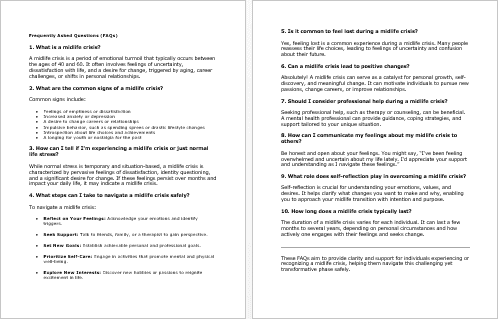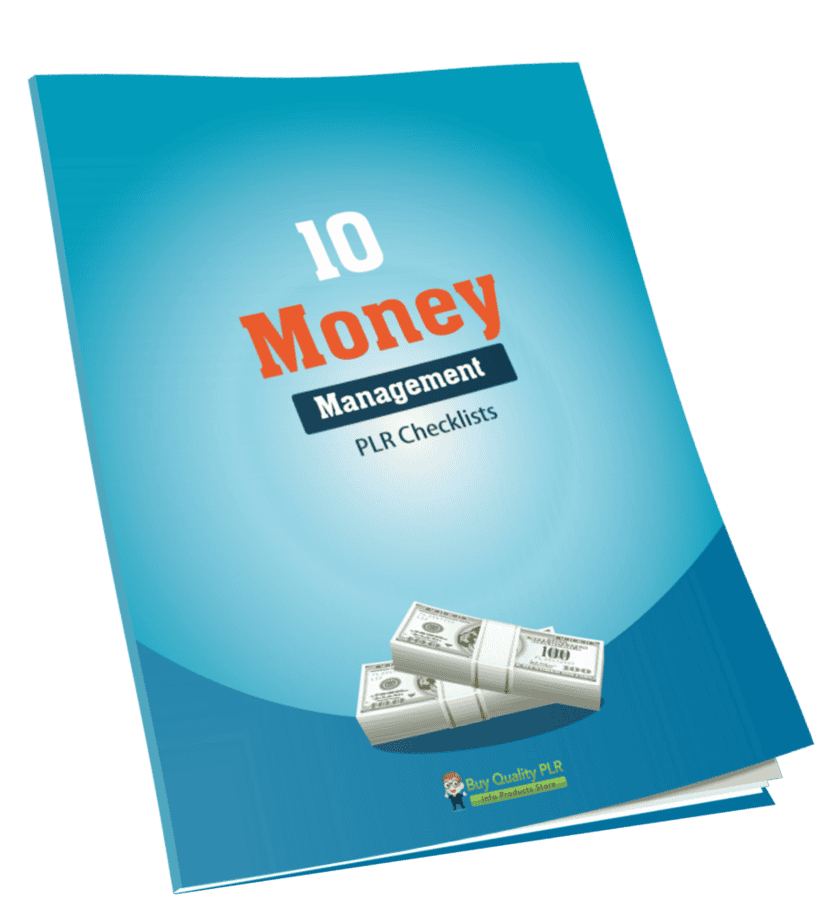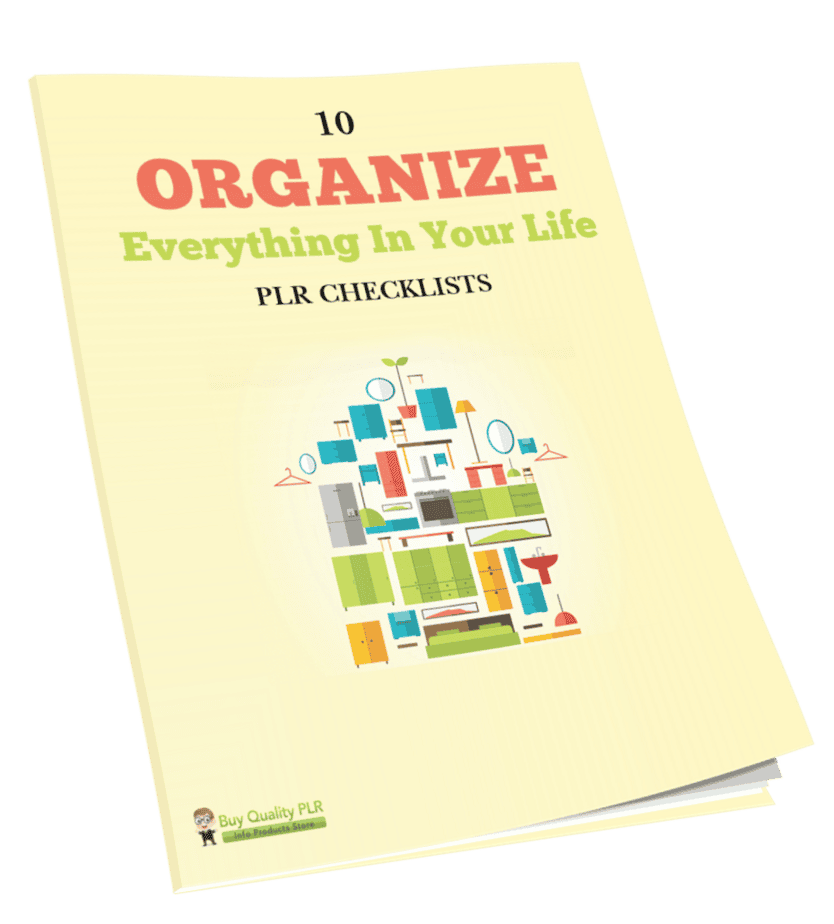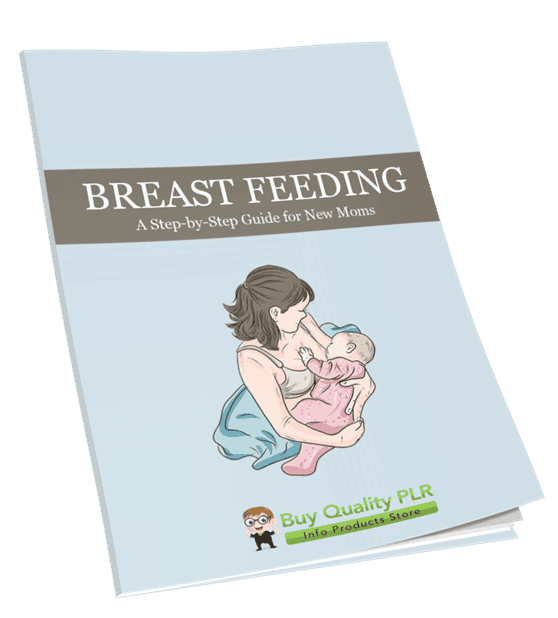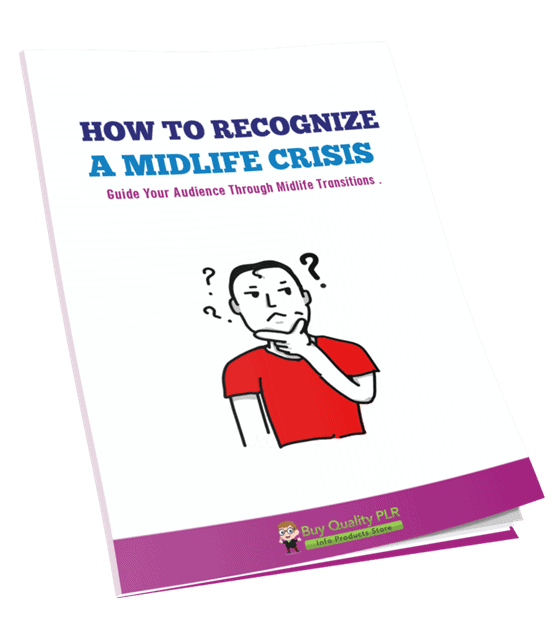
How To Recognize A Midlife Crisis PLR Course 26k words
in PLR Checklists , PLR eBooks , PLR eCourses , PLR List Building Reports , Premium PLR , Premium PLR eBooks , Premium PLR Reports , Premium White Label Brandable PLR Coaching Courses , Private Label Rights Products , Self Care PLR , Self Discipline PLR , Self Doubt PLR , Self Esteem PLR , Self Help PLR , Self Help PLR eBooks , Self Improvement PLR , Self Improvement PLR EbooksChoose Your Desired Option(s)
has been added to your cart!
have been added to your cart!
#midlifecrisis #selfdiscovery #personalgrowth #emotionalwellbeing #lifetransitions #midlifechallenges #plrcourse #mentalhealthawareness #crisismanagement #lifebalancetips
How to Recognize a Midlife Crisis and Get Through It Safely PLR Course: Guide Your Audience Through Midlife Transitions with This In-Depth, Ready-to-Use Course
Help Others Navigate the Midlife Journey—Create, Teach, and Profit!
Midlife can be a challenging time, filled with uncertainty, questions, and a need for change. The How to Recognize a Midlife Crisis and Get Through It Safely PLR Course is a powerful resource designed to help individuals recognize the signs of a midlife crisis and navigate this stage of life with resilience and confidence. With Private Label Rights (PLR), you can rebrand this course as your own, customize it, and use it to expand your offerings—all for just $17.
Whether you’re a coach, therapist, or content creator, this course is an excellent way to provide meaningful, supportive content to your audience while growing your business. It’s time to offer a course that not only addresses the challenges of midlife but also helps your clients turn these challenges into opportunities for growth.
Presenting…
How To Recognize A Midlife Crisis PLR Course
What’s Inside the How to Recognize a Midlife Crisis and Get Through It Safely PLR Course?
With 25,338 words of content, this course is packed with valuable information, practical strategies, and communication skills that can help professionals and individuals navigate midlife transitions with confidence.
Course Overview:
This course helps learners understand the signs of a midlife crisis, cope with the emotional turbulence, and maintain professionalism at work while going through personal changes.
- Module 1: Understanding Midlife Crisis: What It Is and What It Isn’t
- Definitions, triggers, and common myths.
- Communication focus: Discussing personal challenges at work.
- Activity: Group discussion on recognizing signs in a professional context.
- Module 2: Recognizing the Early Signs of a Midlife Crisis
- Physical, emotional, and behavioral indicators.
- How to address these issues with managers and colleagues.
- Activity: Role-playing conversations with supervisors.
- Module 3: Managing Emotional Turbulence While Maintaining Professionalism
- Mindfulness, stress management, and emotional regulation.
- Communication focus: How to ask for support.
- Activity: Practice crafting an email for requesting time off.
- Module 4: Coping Strategies: How to Get Through It Safely
- Building a support network, exploring new hobbies, and more.
- Communication focus: Discussing personal growth and career changes.
- Activity: Brainstorming new interests and career paths.
- Module 5: Maintaining Professional Relationships During Personal Challenges
- Setting boundaries and maintaining empathy at work.
- Communication focus: Phrases for managing sensitive conversations.
- Activity: Role-playing scenarios for boundary-setting.
- Module 6: Reassessing Life Goals and Finding New Meaning
- Reflecting on career and personal life goals.
- Aligning values with professional paths.
- Activity: Write a personal vision statement for the next phase of life.
- Module 7: Moving Forward: Long-Term Strategies for Growth and Well-Being
- Goal-setting and continuous learning.
- Building a 5-year personal and professional plan.
- Communication focus: Sharing vision with mentors.
- Module 8: Navigating Midlife Conversations in the Workplace
- Language for discussing transitions in a professional setting.
- Communication focus: Giving and receiving feedback.
- Activity: Role-playing conversations with colleagues and managers.
Course Conclusion: Embracing Change with Confidence
- Wrap up with key takeaways and reinforce the importance of self-care during transitions.
Additional Resources Included
- Checklist (379 words): A step-by-step guide to keep learners on track.
- FAQs (505 words): Answers to common questions, making the course easy to understand.
- Sales Page (719 words): A professionally written page to help you market and sell the course.
How to Use and Profit from the How to Recognize a Midlife Crisis and Get Through It Safely PLR Course
This course offers a wealth of possibilities for building your business:
- Sell the Course as Is: Make small edits, add your brand, and start selling the course immediately.
- Break It Into Reports: Create smaller guides or reports and sell them individually for $10-$20.
- Bundle with Other Courses: Combine this content with other PLR materials to create premium packages, priced at $47-$97.
- Create a Membership Site: Use this course as part of a membership site, generating recurring monthly income.
- Offer as an E-Class: Convert the modules into a multi-week e-class and charge $297-$497 for an in-depth learning experience.
- Turn It Into a Physical Product: Print the course as a workbook or guide and sell it as a premium product.
- Convert to Video or Audio Content: Use the content to create a video series, webinars, or podcast episodes.
- Use Excerpts as Lead Magnets: Take parts of the course and offer them as free downloads to build your email list.
With full PLR rights, you can adapt and use this content to create a product that fits your brand and resonates with your audience.
Why Use PLR Content?
- Save Time and Effort: Get a complete, ready-to-sell course without spending hours creating content.
- Build Authority in Your Niche: Offering a well-structured course on such a complex topic positions you as an expert.
- Reach a Broader Audience: This course is perfect for professionals, coaches, and anyone looking to support others through a midlife transition.
- Customizable and Adaptable: Edit the content to match your voice, brand, and unique approach.
What You Can and Can’t Do with This PLR Course
What You CAN Do:
- Sell the course with minor edits as your own.
- Break the content into smaller parts and sell them as standalone products.
- Bundle the course with other content for higher-value packages.
- Add the course to membership sites for recurring income.
- Use it as the basis for an audio or video series.
- Create a lead magnet from excerpts to attract new clients.
- Develop a new product, sell it, or even flip the website for a profit.
What You CANNOT Do:
- Pass on PLR rights to your customers.
- Offer the complete course for free without significant edits.
- Provide 100% affiliate commissions on sales.
- Add the content to products that existing customers have already purchased without charging for it.
Get Started Today for Just $14.99!
For only $14.99, the How to Recognize a Midlife Crisis and Get Through It Safely PLR Course can become your next big offering. With ready-made content, you can create a product that truly makes a difference in people’s lives while building your brand.
Order Now and Start Helping Others Through Their Midlife Journey!
Don’t miss this opportunity to create impactful content that guides others through their midlife transitions. Click the button below to get instant access to the How to Recognize a Midlife Crisis and Get Through It Safely PLR Course and start growing your business today!
has been added to your cart!
have been added to your cart!
Here A Sample of What Inside the How To How To Recognize A Midlife Crisis PLR Course
Course Overview: This course is designed for professionals experiencing or approaching midlife. It equips learners with practical strategies to recognize the signs of a midlife crisis and navigate it in a healthy, positive way. Emphasis is placed on mastering the vocabulary and communication skills needed to confidently discuss these personal challenges in professional settings, ensuring you maintain your composure and productivity at work while navigating personal change.
Module 1: Understanding Midlife Crisis: What It Is and What It Isn’t
Define what a midlife crisis is and debunk common myths.
What is a Midlife Crisis?
A midlife crisis is a psychological and emotional transition that typically occurs between the ages of 40 and 60. It often involves feelings of uncertainty, self-reflection, and reassessment of one’s life, accomplishments, and future goals. This period can be marked by various emotional responses, including anxiety, depression, or a sense of dissatisfaction with life. Individuals may question their career choices, relationships, and personal achievements, leading to significant changes in behavior, lifestyle, or priorities.
Common Signs of a Midlife Crisis
- Emotional Distress: Feelings of sadness, anxiety, or frustration.
- Desire for Change: An urge to make significant lifestyle changes, such as changing jobs, starting new hobbies, or altering relationships.
- Nostalgia: A longing for the past, often characterized by comparing oneself to younger individuals or reminiscing about earlier life stages.
- Reevaluation of Goals: A critical assessment of personal and professional goals, leading to feelings of inadequacy or failure.
- Behavioral Changes: Engaging in riskier behaviors, such as spending sprees, infidelity, or impulsive decisions.
Debunking Common Myths About Midlife Crises
- Myth: Midlife Crises are Universal
- Reality: Not everyone experiences a midlife crisis. While it’s a common phenomenon, the severity and manifestation of a midlife crisis vary greatly among individuals. Some people may navigate midlife with little to no distress, while others may encounter significant turmoil.
- Reality: Not everyone experiences a midlife crisis. While it’s a common phenomenon, the severity and manifestation of a midlife crisis vary greatly among individuals. Some people may navigate midlife with little to no distress, while others may encounter significant turmoil.
- Myth: Midlife Crises Only Affect Men
- Reality: Although midlife crises have been stereotypically associated with men, women can experience them just as intensely. Factors such as societal expectations, career changes, or family dynamics can contribute to midlife transitions for both genders.
- Reality: Although midlife crises have been stereotypically associated with men, women can experience them just as intensely. Factors such as societal expectations, career changes, or family dynamics can contribute to midlife transitions for both genders.
- Myth: Midlife Crises Are a Sign of Failure
- Reality: Experiencing a midlife crisis is not indicative of failure or weakness. It is often a natural part of personal growth and self-discovery. Many people use this period to realign their values, make positive changes, and set new goals.
- Reality: Experiencing a midlife crisis is not indicative of failure or weakness. It is often a natural part of personal growth and self-discovery. Many people use this period to realign their values, make positive changes, and set new goals.
- Myth: Midlife Crises Lead to Destructive Behavior
- Reality: While some individuals may engage in impulsive or reckless behavior during a midlife crisis, this is not the case for everyone. Many people channel their feelings into constructive actions, such as pursuing new interests, strengthening relationships, or enhancing their careers.
- Reality: While some individuals may engage in impulsive or reckless behavior during a midlife crisis, this is not the case for everyone. Many people channel their feelings into constructive actions, such as pursuing new interests, strengthening relationships, or enhancing their careers.
- Myth: Midlife Crises Are Temporary and End on Their Own
- Reality: While some people may navigate through a midlife crisis relatively quickly, others may find it a prolonged period of adjustment. Active coping strategies, support systems, and professional guidance can significantly influence the duration and impact of a midlife crisis.
- Reality: While some people may navigate through a midlife crisis relatively quickly, others may find it a prolonged period of adjustment. Active coping strategies, support systems, and professional guidance can significantly influence the duration and impact of a midlife crisis.
- Myth: Only People in Unsatisfying Lives Experience Midlife Crises
- Reality: Individuals from all walks of life, including those who appear successful and fulfilled, can experience a midlife crisis. This experience often stems from existential questions about meaning, purpose, and life satisfaction, regardless of outward success.
- Reality: Individuals from all walks of life, including those who appear successful and fulfilled, can experience a midlife crisis. This experience often stems from existential questions about meaning, purpose, and life satisfaction, regardless of outward success.
- Myth: A Midlife Crisis Is Always Negative
Conclusion
Understanding what a midlife crisis is and debunking common myths can help individuals navigate this transitional period more effectively. Recognizing that it’s a natural phase of life allows for healthier coping strategies and ultimately leads to personal growth and fulfillment.
Definition of a midlife crisis.
A midlife crisis is a period of emotional turmoil, self-reflection, and reassessment that typically occurs between the ages of 40 and 60. It is characterized by a sense of unease or dissatisfaction with one’s life and achievements, often leading individuals to question their career choices, relationships, and overall purpose.
During this phase, individuals may experience feelings of anxiety, depression, or nostalgia for their youth, prompting them to seek significant changes in their lives. Common behaviors associated with a midlife crisis include pursuing new hobbies, making impulsive life decisions, changing careers, or re-evaluating personal goals. While it can be a challenging experience, it can also serve as an opportunity for personal growth and transformation.
Common triggers: Career dissatisfaction, aging, relationship struggles.
Here’s a detailed look at common triggers for a midlife crisis, including career dissatisfaction, aging, and relationship struggles:
1. Career Dissatisfaction
- Stagnation in Career: Individuals may feel stuck in their current job or unfulfilled by their career trajectory. This stagnation can lead to a sense of wasted potential and a longing for more meaningful work or new challenges.
- Job Burnout: Prolonged stress, overwork, or dissatisfaction with work can result in burnout, prompting individuals to question their career choices and life direction.
- Desire for Change: As people reach midlife, they may feel a strong desire to pursue different career paths or passions that align more closely with their interests and values, leading to feelings of urgency and anxiety about making a change.
- Comparison with Peers: Observing peers who seem to be achieving more professionally can lead to feelings of inadequacy and prompts individuals to reassess their career accomplishments.
2. Aging
- Physical Changes: The natural aging process brings about physical changes that can affect self-esteem and body image. Individuals may become preoccupied with their appearance, fitness, or health issues, leading to distress.
- Mortality Awareness: As people age, they often become more aware of their mortality, prompting existential questions about the meaning of life, accomplishments, and the legacy they will leave behind.
- Nostalgia for Youth: A yearning for the vitality and opportunities of youth can lead to dissatisfaction with the present, making individuals feel trapped between their past and future.
- Health Concerns: The onset of health issues or the decline in physical capabilities can trigger fears about aging and contribute to feelings of helplessness or despair.
3. Relationship Struggles
- Marital or Partnership Issues: Long-term relationships may face challenges, including communication breakdowns, unmet expectations, or a lack of intimacy. These struggles can lead to feelings of isolation and dissatisfaction with personal life.
- Parenting Challenges: As children grow up and leave home (often referred to as the “empty nest syndrome”), parents may experience a sense of loss and purpose, prompting them to reevaluate their identity and relationship dynamics.
- Friendship Changes: Changes in friendships, such as growing apart or experiencing loss, can contribute to feelings of loneliness and dissatisfaction, especially if those relationships were integral to one’s support system.
- Desire for Connection: The realization that personal relationships may not provide the fulfillment they once did can lead individuals to seek new connections, resulting in both anxiety and excitement about change.
Conclusion
These triggers can interact with one another, compounding feelings of distress during midlife. Recognizing these factors can help individuals navigate their experiences more effectively, allowing for healthier coping strategies and opportunities for personal growth.
Psychological aspects: Self-doubt, reevaluation of life goals.
Here’s an exploration of the psychological aspects of a midlife crisis, focusing on self-doubt and the reevaluation of life goals:
1. Self-Doubt
- Questioning Self-Worth: Individuals may begin to question their achievements, abilities, and overall self-worth. They might feel that they haven’t accomplished enough or that their contributions are insignificant compared to others, leading to pervasive feelings of inadequacy.
- Fear of Failure: As individuals assess their past choices, they may grapple with fears of failure, feeling that they have made poor decisions or missed opportunities. This fear can paralyze them from pursuing new ventures or changes in their personal or professional lives.
- Identity Crisis: Midlife often prompts a crisis of identity, where individuals struggle to understand who they are beyond their roles as parents, partners, or professionals. This can lead to a profound sense of confusion and disorientation about one’s place in the world.
- Negative Self-Perception: The onset of aging and physical changes may lead to negative self-perception and body image issues. Individuals might become overly critical of themselves, feeling they no longer measure up to societal standards or their own expectations.
- Comparison with Others: Social comparisons with peers can exacerbate self-doubt. Observing others’ successes, whether through social media or personal encounters, can lead to feelings of envy and reinforce a sense of failure or lack of fulfillment.
2. Reevaluation of Life Goals
- Reflection on Past Choices: Midlife is a time for introspection, where individuals often reflect on their past decisions and life trajectory. This can lead to a critical evaluation of whether they are living in alignment with their values and aspirations.
- Shifting Priorities: As individuals age, their priorities may shift, leading to the realization that previously held goals no longer resonate with them. This reevaluation can prompt a desire to pursue different paths, whether in career, relationships, or personal development.
- Desire for Meaning and Fulfillment: Many individuals find themselves questioning the meaning and purpose of their lives during midlife. This existential reflection can lead to a search for deeper fulfillment and a desire to make significant contributions to society or their communities.
- Goal Setting and Realignment: The crisis can inspire individuals to set new goals that align with their evolving values. This process may involve developing new skills, pursuing education, or exploring new passions, fostering a renewed sense of purpose.
- Potential for Growth: Although reevaluating life goals can be challenging, it also provides an opportunity for personal growth and transformation. Individuals can emerge from this phase with a clearer vision for their future, fostering resilience and a proactive mindset.
Conclusion
Understanding the psychological aspects of self-doubt and the reevaluation of life goals during a midlife crisis can empower individuals to navigate this challenging phase with greater awareness and intention. By addressing these feelings constructively, individuals can transform potential crises into opportunities for growth, leading to a more fulfilling and meaningful life.
Communication Focus: Discussing sensitive personal topics at work without oversharing.
Discussing sensitive personal topics at work can be challenging, especially during a midlife crisis when emotions and self-reflection may be heightened. It’s important to navigate these conversations carefully, balancing openness with professionalism. Here are some tips and strategies for discussing sensitive topics without oversharing:
1. Assess the Need to Share
- Determine Relevance: Before discussing a personal issue, ask yourself if it’s necessary for your work environment. Consider whether sharing will benefit your colleagues or the situation at hand.
- Evaluate Timing: Choose the right moment to discuss sensitive topics, avoiding busy or stressful times. Ensure that the person you’re speaking with is receptive and has the time to engage in a meaningful conversation.
2. Set Boundaries
- Establish What to Share: Decide in advance what aspects of your situation you are comfortable discussing. Be clear about your boundaries to prevent oversharing.
- Practice Conciseness: When bringing up a sensitive topic, keep your comments brief and to the point. Avoid going into excessive detail, focusing on key aspects that are relevant to the discussion.
3. Use “I” Statements
- Own Your Experience: Frame your feelings and experiences using “I” statements, such as “I feel” or “I’ve noticed.” This helps express your thoughts without sounding accusatory or putting others in an uncomfortable position.
- Example: Instead of saying, “You never understand my situation,” try saying, “I feel overwhelmed with personal changes and could use some support.”
4. Choose the Right Language
- Maintain Professional Tone: Use language that is professional and appropriate for the workplace. Avoid slang, overly emotional language, or jargon that may confuse your colleagues.
- Stay Positive: Focus on constructive aspects of your situation rather than dwelling on negative feelings. This can foster a more supportive and collaborative atmosphere.
5. Gauge Reactions
- Read the Room: Pay attention to non-verbal cues from your colleagues. If they seem uncomfortable or uninterested, it may be a sign to shift the conversation or end it altogether.
- Be Prepared for Questions: If colleagues respond with curiosity or questions, consider how much you want to reveal. It’s perfectly acceptable to say, “I appreciate your concern, but I’d prefer to keep some details private.”
6. Offer Supportive Context
- Provide Background: If relevant, briefly explain why you’re sharing this personal information. Context can help others understand your perspective without requiring too much detail.
- Example: “I’m going through some personal changes, and I wanted to let you know that I might be a bit more distracted than usual.”
7. Redirect the Conversation
- Keep It Balanced: If you feel the conversation is veering too much into personal territory, redirect it back to professional topics or ask your colleagues about their experiences.
- Example: “I appreciate your support. How have you been managing your workload during this busy time?
8. Know When to Seek Professional Help
- Recognize Limitations: Understand that not all personal issues are suitable for workplace discussions. If you’re struggling significantly, consider seeking support from a therapist or counselor instead.
- Encourage Professional Boundaries: If sensitive topics arise frequently in your workplace, suggest establishing boundaries for personal discussions to maintain a healthy work environment.
Conclusion
Discussing sensitive personal topics at work requires a thoughtful approach to ensure that conversations remain professional and appropriate. By setting clear boundaries, using effective communication techniques, and being mindful of your colleagues’ comfort levels, you can foster open dialogue without oversharing. This balance can enhance workplace relationships and contribute to a supportive work culture during challenging times.
Activity: Group discussion on identifying signs of midlife crisis in a professional context.
Activity: Group Discussion on Identifying Signs of Midlife Crisis in a Professional Context
Objective: To foster awareness and understanding of the signs of midlife crisis among colleagues, enhancing empathy and support in the workplace.
Preparation
- Group Size: Aim for 6-12 participants to ensure everyone has an opportunity to contribute.
- Duration: 45-60 minutes.
- Materials Needed:
- Whiteboard or flip chart
- Markers
- Handouts with signs of midlife crisis (see below for suggested content)
- Optional: Post-it notes for anonymous contributions
Structure of the Discussion
- Introduction
- Icebreaker: Start with a brief icebreaker to create a relaxed atmosphere. For example, ask participants to share one positive change they’ve made in their lives recently.
- Overview: Introduce the topic of midlife crisis, emphasizing its relevance in the professional context. Explain that recognizing signs can foster a supportive workplace.
- Presentation of Signs
- Distribute Handouts: Provide participants with handouts that outline common signs of a midlife crisis, including:
- Emotional Signs: Increased irritability, anxiety, or mood swings.
- Behavioral Changes: Sudden career changes, impulsive decisions, or withdrawal from colleagues.
- Physical Symptoms: Changes in health or fitness routines, neglecting self-care.
- Self-Reflection: Questioning life choices, feeling unfulfilled or stuck.
- Emotional Signs: Increased irritability, anxiety, or mood swings.
- Group Discussion
- Small Group Breakout: Divide participants into smaller groups (3-4 people) and ask them to discuss the following questions:
- What signs have you noticed in yourself or colleagues that might indicate a midlife crisis?
- How can these signs manifest in a professional environment?
- What strategies can we adopt to support each other during challenging times?
- What signs have you noticed in yourself or colleagues that might indicate a midlife crisis?
- Encourage Sharing: After 15 minutes, reconvene the larger group and ask each small group to share their key points. Facilitate a discussion on common themes and insights.
- Reflection and Conclusion
- Summarize Key Points: Highlight the main signs identified and the importance of open communication and support.
- Action Steps: Encourage participants to think of one actionable step they can take to foster a supportive environment in their workplace, whether it’s checking in with a colleague or creating informal support networks.
- Closing Remarks: Thank everyone for their participation and openness, emphasizing the value of maintaining a supportive workplace culture.
Follow-Up Activity
- Anonymous Feedback: Provide participants with post-it notes to anonymously share one concern or suggestion related to midlife crises in the workplace. Collect the notes and address them in a follow-up meeting or communication.
Outcome
This group discussion aims to raise awareness of the signs of midlife crisis in a professional context, fostering a culture of understanding and support. By encouraging open dialogue, participants can learn to recognize these signs in themselves and others, leading to a more empathetic and resilient workplace.
Vocabulary: “Existential”, “self-reflection”, “career plateau”, “life transition”.
Here’s a brief explanation and usage examples for the vocabulary words you’ve provided, focusing on their relevance to the context of a midlife crisis and personal development:
1. Existential
- Definition: Relating to existence, particularly human existence, and the feelings and thoughts associated with it, often exploring themes of meaning, purpose, and identity.
- Usage in Context: “During a midlife crisis, individuals often experience existential questions about their purpose in life, leading to profound self-exploration and sometimes anxiety.”
2. Self-Reflection
- Definition: The process of examining one’s thoughts, feelings, and behaviors to gain insight into oneself, often leading to personal growth and understanding.
- Usage in Context: “Self-reflection is crucial during a midlife crisis, as it allows individuals to assess their values, achievements, and future goals, helping them navigate their emotional landscape.”
3. Career Plateau
- Definition: A stage in one’s career where there is little to no advancement or growth, often leading to feelings of stagnation and dissatisfaction.
- Usage in Context: “Many professionals encounter a career plateau in midlife, which can trigger feelings of frustration and prompt a reevaluation of their career path and aspirations.”
4. Life Transition
- Definition: A significant change or shift in one’s life circumstances, roles, or perspectives, often associated with personal growth and adaptation.
- Usage in Context: “Navigating a life transition, such as becoming an empty nester or changing careers, can be challenging but also offers an opportunity for renewal and reinvention during a midlife crisis.”
These vocabulary words are key to understanding the complexities of a midlife crisis and can help enhance communication about this topic in both personal and professional contexts.
We’re also giving these extra bonuses
How To Recognize A Midlife Crisis – Checklist
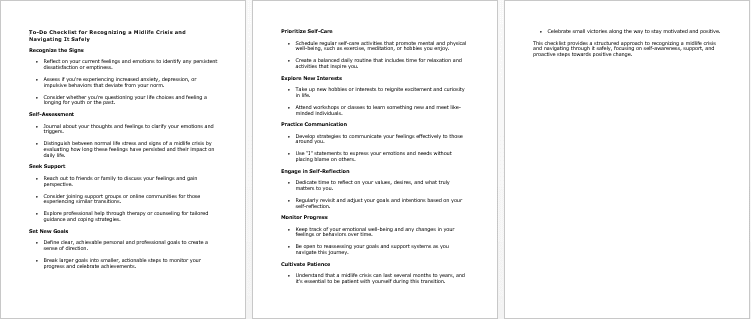
How To Recognize A Midlife Crisis – FAQs
How To Recognize A Midlife Crisis – Salespage Content

Package Details:
Word Count: 25 338 Words
Number of Pages: 112
How To Recognize A Midlife Crisis – Bonus Content
Checklist
Word Count: 472 words
FAQs
Word Count: 569 words
Salespage Content
Word Count: 635 words
Total Word Count: 20 910 Words
Your PLR License Terms
PERMISSIONS: What Can You Do With These Materials?
Sell the content basically as it is (with some minor tweaks to make it “yours”).
If you are going to claim copyright to anything created with this content, then you must substantially change at 75% of the content to distinguish yourself from other licensees.
Break up the content into small portions to sell as individual reports for $10-$20 each.
Bundle the content with other existing content to create larger products for $47-$97 each.
Setup your own membership site with the content and generate monthly residual payments!
Take the content and convert it into a multiple-week “eclass” that you charge $297-$497 to access!
Use the content to create a “physical” product that you sell for premium prices!
Convert it to audios, videos, membership site content and more.
Excerpt and / or edit portions of the content to give away for free as blog posts, reports, etc. to use as lead magnets, incentives and more!
Create your own original product from it, set it up at a site and “flip” the site for megabucks!
RESTRICTIONS: What Can’t You Do With These Materials?
To protect the value of these products, you may not pass on the rights to your customers. This means that your customers may not have PLR rights or reprint / resell rights passed on to them.
You may not pass on any kind of licensing (PLR, reprint / resell, etc.) to ANY offer created from ANY PORTION OF this content that would allow additional people to sell or give away any portion of the content contained in this package.
You may not offer 100% commission to affiliates selling your version / copy of this product. The maximum affiliate commission you may pay out for offers created that include parts of this content is 75%.
You are not permitted to give the complete materials away in their current state for free – they must be sold. They must be excerpted and / or edited to be given away, unless otherwise noted. Example: You ARE permitted to excerpt portions of content for blog posts, lead magnets, etc.
You may not add this content to any part of an existing customer order that would not require them to make an additional purchase. (IE You cannot add it to a package, membership site, etc. that customers have ALREADY paid for.)
Related Products That May Interest You



Share Now!

